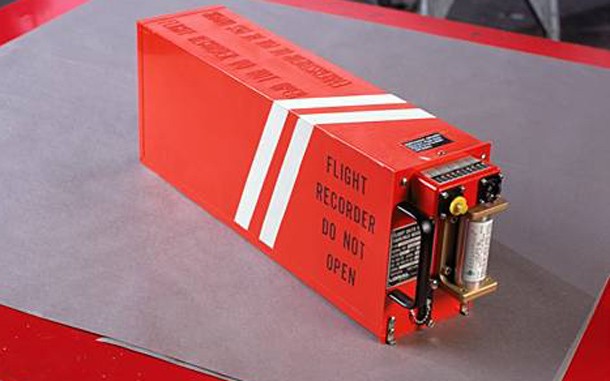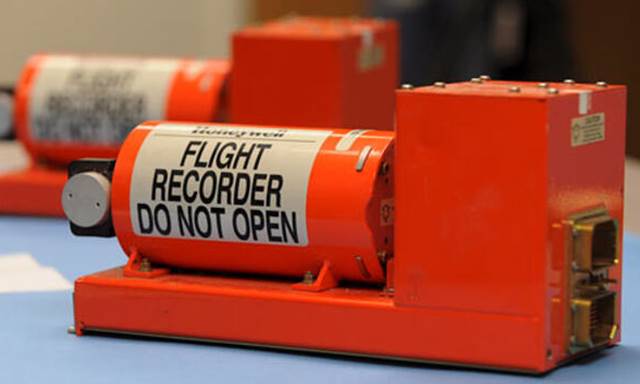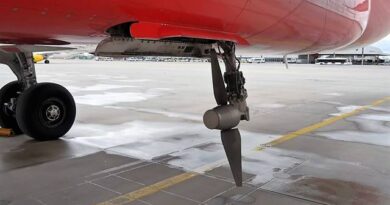Debunking the Myths: All About Flight Recorders (CVRs, FDRs, and ULBs)
Contrary to popular belief, flight recorder isn’t actually black! They’re brightly colored orange for easier retrieval in an accident. These crucial devices play a vital role in aviation safety by capturing critical flight data.
Flight Recorders: Silent Sentinels
Modern airplanes are equipped with flight recorders that continuously track and record important information. Their high-durability, bright orange casing ensures they survive accidents, aiding in investigations.

The Two Key Players: CVR and FDR
- Cockpit Voice Recorder (CVR): This recorder captures audio from the cockpit, including pilot conversations, alarms, and background noises. Invaluable for accident investigations, CVRs help reconstruct the sequence of events and crew actions.
- Flight Data Recorder (FDR): Tracks a wide range of aircraft parameters like altitude, airspeed, engine performance, and control movements. This data provides a detailed picture of the aircraft’s behavior throughout the flight.
ULB: The Underwater Locator Beacon
- Underwater Locator Beacon (ULB): Many modern flight recorders are equipped with a ULB. This beacon automatically activates upon water impact, emitting a distress signal that helps search and rescue teams locate the recorders in water crashes.
Flight Recorders: Guardians of the Skies
The information from flight recorders is essential for:
- Accident Investigation: CVR and FDR data are key to determining the cause of accidents. This knowledge leads to improvements in aircraft design, pilot training, and safety procedures.
- Preventing Future Accidents: By analyzing flight recorder data, aviation authorities and manufacturers can identify trends and potential safety issues, allowing for proactive measures to prevent future accidents.
Crashworthiness
Flight recorders are designed to survive both high-speed impact and post-impact fire. They are, however, not invulnerable and are sometimes destroyed. The recorder is designed to ensure that data, rather than the recorder itself, survives an accident. The data storage medium (tape or microchips) is mounted inside an impact-resistant and fire-resistant container.
The crashworthiness standards of flight recorders was revised in 2003 by the European Organisation for Civil Aviation Equipment (EUROCAE) committee, an international body on which the ATSB was represented. The recorder’s memory module is now required to withstand:
– An impact producing a 3,400-g deceleration for 6.5 milliseconds (equivalent to an impact velocity of 270 knots and a deceleration or crushing distance of 45 cm)
– A penetration force produced by a 227 kilograms (500 pounds) weight which is dropped from a height of 3 metres (10 feet)
– A static crush force of 22.25 kN (5,000 pounds) applied continuously for five minutes
– A fire of 1,100 degrees Celsius for 60 minutes.
AI: A New Copilot in Flight Recorder Analysis
The ever-growing complexity of aircraft systems and the vast amount of data collected by flight recorders pose a challenge for traditional investigation methods. This is where Artificial Intelligence (AI) steps in, offering exciting possibilities for the future of aviation safety.
Revolutionizing Data Analysis: Current methods of analyzing flight recorder data, particularly combing through hours of CVR recordings or identifying anomalies in massive FDR datasets, can be incredibly time-consuming. AI, with its prowess in pattern recognition and data analysis, has the potential to revolutionize this process.
Imagine this: AI algorithms could autonomously flag potential issues in FDR data, allowing investigators to prioritize critical areas for deeper analysis. Similarly, AI could be trained to analyze CVR recordings, recognizing subtle changes in pilot voices that might indicate stress or fatigue. This could provide valuable insights into crew resource management and potential human factors contributing to an incident.
The future holds immense potential for AI as a valuable partner in deciphering the wealth of information hidden within flight recorders. By leveraging AI’s capabilities, we can unlock a new level of understanding from these crucial data sources, ultimately leading to a safer and more efficient aviation industry.
The Future of Flight Recorders
Flight recorder technology is constantly advancing. Increased recording capacity, recording of more data parameters, and improved data transmission are some exciting developments. These advancements will further strengthen the role of flight recorders in safeguarding air travel.
References and Further Reading on Flight Recorders (CVRs, FDRs, and ULBs)
- National Transportation Safety Board (NTSB): Cockpit Voice Recorders (CVR) and Flight Data Recorders (FDR) https://www.ntsb.gov/Pages/home.aspx
- Federal Aviation Administration (FAA): How FDRs and CVRs Work https://en.wikipedia.org/wiki/Flight_recorder ([This link may require a search for “How FDRs and CVRs Work” on the FAA website])
- SKYbrary Aviation Safety: Flight Data Recorder (FDR) https://www.ntsb.gov/news/Pages/cvr_fdr.aspx
- Universal Avionics: Cockpit Voice and Flight Data Recorders https://www.universalavionics.com/home/products/flight-recorders
Source: Australian Transport Safety Bureau
For more articles click.



